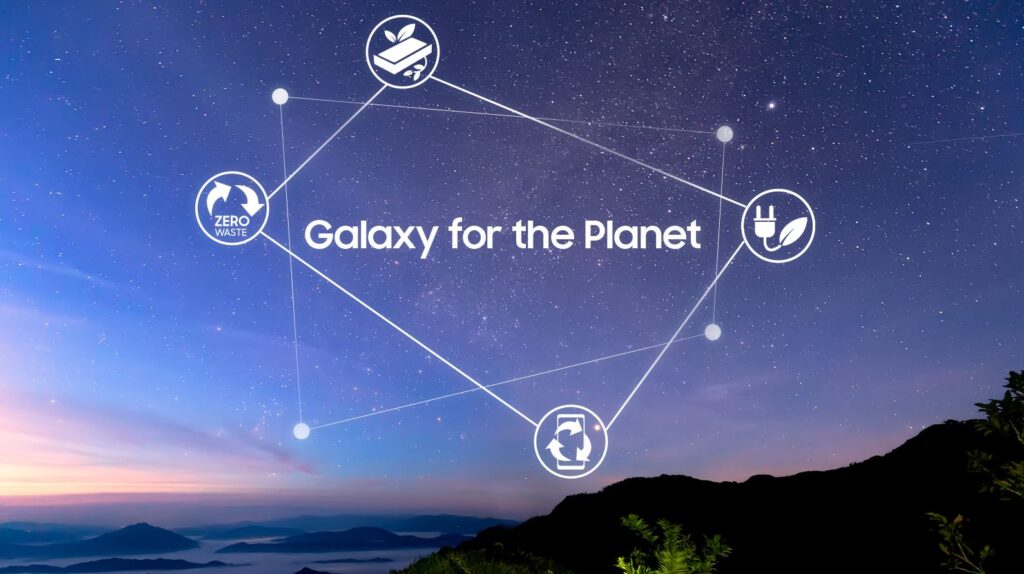
Galaxy for the Planet programme sets moonshot goal for a more sustainable world
Samsung has taken the wraps off their Galaxy for the Planet sustainability programme for their smartphone business that aims to take decisive action in keeping with their position as one, if not the largest smartphone manufacturer on the planet to create positive climate change.

What is the Samsung Galaxy for the Planet programme?
The Samsung Galaxy for the Planet programme sets a series of targets that aim to be achieved by 2025 to reduce the environmental footprint and resource depletion of Samsung’s Galaxy phones, laptops and more.
Prior to this, they’ve taken steps along the way by reducing their packaging or acquiring more eco-friendly alternatives like sustainable paper or minimising elaborate printing. Recently, they’ve also reduced the amount of accessories in products like charging cables to further expedite this noble goal.
Among the other steps taken by Samsung to further this goal along are:
- Incorporate recycled material in all new mobile products by 2025
To foster a more circular economy, Samsung is investing in new and innovative eco-conscious materials for its products. With the goal of using recycled material across all new mobile products by 2025, Samsung will use various recycled materials within its products, taking their strength, aesthetics and durability into consideration.
- Eliminate all plastics in mobile packaging by 2025
Samsung is working towards the full elimination of single use plastics from product packaging by 2025 – reducing, removing and replacing unnecessary resources and materials traditionally used in device packaging and incorporating eco-conscious solutions.
- Reduce standby power consumption of all smartphone chargers to below 0.005W by 2025
Samsung is prioritizing energy-saving technology that increases energy efficiency and reduces power consumption. Samsung has successfully reduced the standby power consumption across all smartphone chargers to 0.02W, which is among the most energy efficient in the mobile industry. To build on this progress, Samsung will work to achieve zero power standby consumption of smartphone chargers, targeting reduction to below 0.005W by 2025.
- Achieve zero waste to landfill by 2025
Samsung is minimizing waste generated at its mobile worksites, with the commitment to divert all waste from landfill by 2025. Samsung will also work to reduce e-waste on a global scale by optimizing the product lifecycle, improving product design processes, and through initiatives like Galaxy Upcycling, Certified Re-Newed, and Trade-In programs.
“Samsung is committed to creating solutions that enable a better future for our people and our planet. However, we know we cannot do this alone, and the collective fight for the planet is not a competition,” said Stephanie Choi, SVP & Head of Marketing of the Mobile Communications Business at Samsung Electronics. “We strive for collaboration in everything we do, and our strategic partnerships across sectors, industries and markets enable us to scale positive impact around the world – helping us achieve a more sustainable future.”
To see how far along that Samsung is with their Galaxy for the Planet programme, check out their 2021 Sustainability report here.
